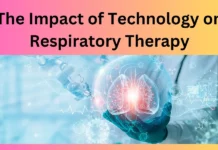Parkinson’s disease is a frequent condition in the nervous system. It is due to issues with nerve cells that are located in the area of the brain that produce dopamine. Dopamine is a chemical that is required to ensure the proper control of motion and muscles therefore the signs of the disease are caused by a decline of this chemical. Parkinson’s disease is most commonly seen in people who are over 65 years old, however it does show up earlier, with 5- 10% developing before the age of 40.
The main clinical symptoms of Parkinson’s disease include shaking or tremors which can begin in the hand or arm There is usually stiffness or rigidity of the muscles as well as a slowing of movement; the posture becomes more stooped, and there can be equilibrium issues. Parkinson’s disease may also cause increased pain , and can cause depression symptoms and can cause issues in sleep and memory. There’s no specific test to diagnose Parkinson’s. The diagnosis is typically mostly based on the nature of symptoms, physical examination and a neural examination. The other causes of the symptoms and signs must be eliminated. There are imaging tests like the CAT scan, or MRI which could be used to identify other problems. Sometimes, Dopamine transporter diagnostics could also be considered.
The reason for Parkinson’s disease isn’t fully understood. It is believed to have environmental and genetic elements to and some experts believe that a virus could trigger Parkinson’s too. Dopamine levels that are lower as well as norepinephrine an ingredient that is the cause of dopamine, are already observed in people suffering from Parkinson’s, but it’s unclear what is behind this. The unusual proteins that are known as Lewy corpses have been discovered within the brains of patients with Parkinson’s disease; however scientists aren’t sure of the impact they could play in the progression of Parkinson’s.
While the precise cause isn’t clear, research has discovered risk-factors that have established categories of people who are more likely to develop the disease. Men are 1.5 times more likely to develop Parkinson’s disease than women. Caucasians are significantly more likely to develop the disease when compared with African Americans or Asians. People who have close relatives of the family with the disease, are much more likely suffer from it, which could be due to the inheritance role. Certain toxins may cause the issue, which suggests that the environment plays a part. Individuals who suffer from brain injuries are more likely to suffer and develop Parkinson’s disease.
There’s no cure to treat Parkinson’s. This doesn’t mean that the symptoms and signs can’t be treated. The most effective strategy is to make use of medications to increase or substitute for dopamine. A balanced and healthy diet with regular exercise is essential. It is possible to make changes to the environment at home and also work to keep the person engaged and active. There are many alternatives for brain surgery treatments that can be utilized to ease some motor symptoms. A variety of health professionals is usually involved.















